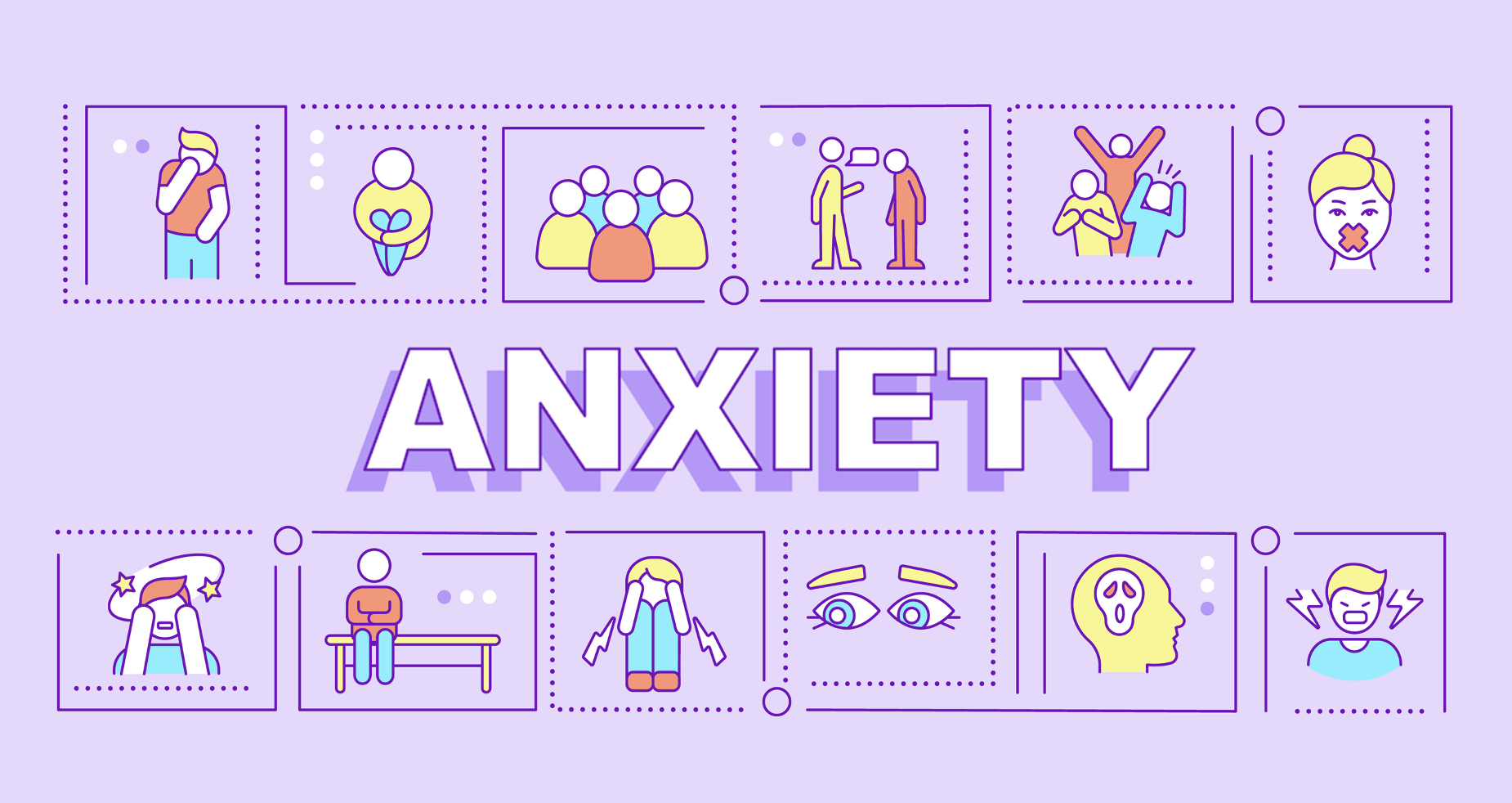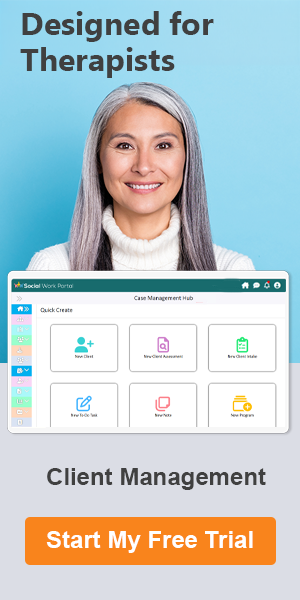Children’s Depression & Anxiety Assessment Tools and Tests
2024 Guide on Child Anxiety & Depression Screening
It is estimated that 1 in 8 children will experience anxiety and 1 in 6 will experience depression at some point in their lives so early recognition and treatment are essential for ensuring the best outcomes for children struggling with these conditions.
Anxiety and depression are common mental health issues that can affect people of all ages, including children. These conditions can have a profound impact on a child’s life, interfering with their ability to attend school, form meaningful relationships, and participate in daily activities.
Unfortunately, child anxiety and depression are often overlooked or misdiagnosed, leading to delays in treatment and an increased risk for negative outcomes.
In this Social Work Portal guide, we will explore the causes and symptoms of anxiety and children’s depression, child depression screening tools, as well as the importance of early recognition and treatment.

Children’s Depression and Anxiety Assessment
If you’re looking to get valuable information on what a child depression test looks like and what should a child anxiety list contain, don’t miss this guide on children depression and anxiety.
See Also: Child Assessment Tools for Mental Health
Would you like to share feedback on our guide on children’s depression and anxiety assessment? Is there any child behavior disorders quiz that we can include in this guide for other mental health professionals to leverage? If so, contact the Social Work Portal Team.
Table of Contents: Guide on Anxiety & Child Depression Screening
Keep on scrolling down this page to read each section or click any link below to go directly to that section.
- What is Children’s Depression & Anxiety?
- Risk Factors for Childhood Anxiety and Depression
- Depression and Anxiety in Children Symptoms Checklist
- Childhood Anxiety and Depression Screening Tools
- Conclusion | Children Depression and Anxiety Assessment
- FAQ | Childhood Anxiety and Depression
Don’t Miss: Best Therapist Private Practice Guide
Is there a child behavior disorders quiz that has provided great value to you that we can include in this guide for others to leverage? If so, contact the Social Work Portal Team.
What is Children’s Depression & Anxiety? Definition
Child anxiety is a feeling of unease, such as worry or fear, that can range from mild or severe. In children, anxiety can manifest in a variety of ways, including:
- Separation anxiety
- Generalized anxiety disorder
- Phobias
- Panic disorder
- Obsessive-compulsive disorder
Child anxiety can interfere with a child’s daily life, affecting their ability to attend school, form relationships, and participate in activities they once enjoyed. Children’s depression, on the other hand, is a serious mental health condition characterized by:
- Persistent feelings of sadness
- Hopelessness; and
- Lack of interest in activities
It can also cause physical symptoms such as changes in appetite and sleep patterns. Depression in children can have a significant impact on their daily life and can lead to difficulties at school, home, and in their relationships with friends and family.
To best track all symptoms, assessments, case notes, and tasks in your mental health practice, we have created an All-in-One Client and Case Management Toolkit.
Sign up for SWP Case Management Hub and discover how our software can streamline your workflow, improve client outcomes, and help you focus on what really matters – providing the best mental health care possible to those in need.
Next, we will take a look at risk factors for children and youth anxiety and depression.
Related: Mental Health Intake Assessment
Risk Factors for Childhood Anxiety and Depression
There are several factors that can increase the risk of childhood anxiety and depression, including:
- Genetics
- Trauma or abuse
- Life events
- Chronic medical conditions
- Substance abuse
- Social isolation
- Brain chemistry
It is important to note that multiple factors can contribute to the development of anxiety and depression in children, and no two children are alike. Early recognition and intervention can help children overcome their symptoms and reach their full potential.
Now that we’ve covered the main risk factors, it is time to go over depression and child anxiety checklists, so you know what are the main signs and symptoms to be on the lookout for.
Popular Article: Best Therapy & Counseling Intake Form
Depression and Anxiety in Children Symptoms Checklist
Depression and anxiety in children can be difficult to detect, as young people may struggle to express their emotions and experiences. This is where the depression and anxiety in children symptoms checklist comes into play.
These checklists allow parents, caregivers, teachers, and mental health professionals to assess the symptoms of depression and anxiety in children.
- Childhood Anxiety Symptoms Checklist – Child Anxiety Checklist
We have prepared a childhood anxiety symptoms checklist that provides some of the most common symptoms that parents, caregivers, teachers, and mental health professionals should be on the lookout for when suspecting that child may be suffering from anxiety.
Anxiety in children symptoms checklist:
- Restlessness and nervousness
- Fears or phobias
- Avoidance behaviors
- Difficulty sleeping
- Irritability
- Physical symptoms such as headaches, stomach aches, or nausea
- Excessive worry or rumination
- Rapid heartbeat or sweating
- Shortness of breath or chest tightness
- Constant fatigue
- Trouble concentrating or paying attention
- Nightmares or night terrors
- Repetitive behaviors or rituals
- Physical restlessness or fidgeting
- Outbursts of anger or frustration
- Changes in appetite or eating habits
- Difficulty separating from parents or caregivers
- Unexplained crying or sadness

Childhood Anxiety Symptoms Checklist
Anxiety in children can manifest in a variety of symptoms and behaviors so it is important to remember that not all children with anxiety will experience all of the symptoms listed in our childhood anxiety symptoms checklist.
Furthermore, the severity and frequency of symptoms can vary from child to child. A comprehensive evaluation by a mental health professional is necessary to determine if a child is experiencing anxiety and to develop an appropriate treatment plan.
If you’re a mental health professional that’s looking for a cloud-based solution to help you with client evaluation, streamline assessments, and manage clients – Social Work Portal’s Case Management Hub is exactly what you need.
Subscribe today and unlock a world of possibilities.
Next, we will give you an overview of common depression symptoms children may experience.
Read More: Illness Management and Recovery Manual
Do you have additional feedback on our anxiety in children symptoms checklist? Do you have any tips about child anxiety list in general? Click here to contact the Social Work Portal Team.
- Children’s Depression Symptoms Checklist – Is My Child Depressed? Quiz
Depression in children can have a significant impact on their daily functioning, relationships, and overall well-being which is why we have prepared a checklist of the most common depression symptoms in children.
While this checklist/is my child depressed? quiz can be used by parents and caregivers to recognize symptoms of depression in children, it is crucial to note that these symptoms can also be indicative of other mental health conditions, and you shouldn’t immediately jump to conclusions.
Depression in children symptoms checklist | Is my child depressed? quiz:
- Persistent sadness or irritability
- Loss of interest in activities that were once enjoyed
- Changes in appetite and sleep patterns
- Difficulty concentrating
- Fatigue or decreased energy
- Physical symptoms, such as headaches or stomach aches
- Feelings of worthlessness or guilt
- Thoughts of death or suicide
- Difficulty making decisions or remembering things
- Agitation or restlessness
- Social withdrawal or isolation
- Unexplained crying spells
- Decreased ability to take pleasure in things
- Decreased motivation or drive
- Decreased self-esteem
- Increased irritability or frustration
- Thoughts of hopelessness or helplessness
- Decreased ability to concentrate or make decisions
If after reviewing this “Is my child depressed? quiz you recognize one or more of these symptoms in your child or client, you should always seek professional help for further evaluation, an accurate diagnosis, and proper treatment.
In the sections below, we will give you an overview of the child behavior disorders quiz, childhood depression test options, and other tools that mental health practitioners use when screening for anxiety and depression.
Related: Private Psychotherapy Practice Guide
Are you looking for free social worker templates & forms? You can download all our free social worker tools here.
Childhood Anxiety and Depression Screening Tools
As mentioned in the sections above, it is estimated that 1 in 8 children will experience anxiety and 1 in 6 will experience depression at some point in their lives so early recognition and treatment are essential for ensuring the best outcomes for children struggling with these conditions.
Here are some of the tools and techniques used by mental health professionals to diagnose anxiety and depression in children.
1. Child Anxiety Screening Tools
- Revised Children’s Anxiety and Depression Scale (RCADS)
Revised Children’s Anxiety and Depression Scale (RCADS) is a self-report questionnaire designed to assess anxiety and depression symptoms in children and adolescents aged 7 to 17 years.
Revised Children’s Anxiety and Depression Scale was developed as a revision of the original Children’s Depression Inventory (CDI) and is now commonly used to screen for both anxiety and depression symptoms in this age group.
This depression and anxiety questionnaire for children includes 53 items, each assessing a specific symptom of anxiety or depression, such as worry, sadness, or feelings of hopelessness.
- Generalized Anxiety Disorder 7-Item Scale (GAD-7)
GAD-7 is a widely used screening tool for evaluating anxiety symptoms in children and adolescents. This brief anxiety questionnaire for children consists of 7 questions that assess the intensity of symptoms like excessive worry, restlessness, and irritability.
GAD-7 is a simple and convenient tool that can assist in identifying children and teens who may have Generalized Anxiety Disorder and require a more in-depth evaluation.
Looking for pre-made GAD-7, SCARED, PHQ-A, or Pediatric Symptoms Checklist that you can use in your practice and securely send to clients? Social Work Portal Case Management Hub comes equipped with all those assessments, intakes, case notes, reporting, and more…
Sign up for Client & Case Management and see how our software can help you streamline your practice.
- Screen for Child Anxiety Related Disorders (SCARED)
SCARED is a well-established tool for detecting anxiety in children that is generally administered to children over 6 years old. There is also a parent/caregiver version of this questionnaire.
SCARED anxiety questionnaire for children is designed to evaluate five prevalent anxiety disorders in children, including generalized anxiety disorder, panic disorder, social phobia, separation anxiety disorder, and specific phobia.
This anxiety questionnaire for children consists of 41 questions, each focusing on a particular symptom of anxiety.
- Pediatric Anxiety Rating Scale (PARS)
PARS anxiety questionnaire for children is used to evaluate anxiety symptoms in children and adolescents.
PARS questionnaire includes 50 questions/child anxiety checklist that assess a wide range of anxiety symptoms, including physical symptoms like heart palpitations and sweating, behavioral symptoms such as avoiding certain activities or people, and cognitive symptoms like worrying and rumination.
- Patient Health Questionnaire (PHQ)
PHQ offers various screening tools and child behavior disorders quiz for child mental health assessment.
These tools range from a brief 2-question child anxiety checklist to a more comprehensive 83-question depression and anxiety questionnaires for children.
This child behavior disorders quiz covers a range of mood problems, anxiety, eating disorders, alcohol use, and somatoform disorders.
Don’t Miss: Psychologist Private Practice
Do you have any questions about the content and information provided in any child depression quiz or depression test for child covered in this guide? If so, contact the Social Work Portal Team.
 |
—-– Help your clients thrive with All-in-One Case Management Hub ——– |
2. Child Depression Screening Tools
The child depression screening tools we are going to discuss next are just some of the many used to identify symptoms of depression in children and adolescents. These tools are only meant to serve as a preliminary screening tool and are never a substitute for a comprehensive evaluation by a mental health professional.
- Children’s Depression Inventory (CDI)
Children’s Depression Inventory (CDI) is a child depression screening tool for evaluating signs of depression in children and adolescents aged 7 to 17.
CDI childhood depression test features 27 items that examine various aspects of depression such as feelings of sadness, hopelessness, irritability, trouble sleeping, and decreased energy.
The CDI2 is a revised version of the CDI depression test for child with 25 items that include updated content, scoring, and expanded age range. In this child depression test, kids are given three options to answer each question.
- Patient Health Questionnaire (PHQ) – PHQ-A (PHQ-9 Modified for Adolescents)
PHQ-9: Modified for Adolescents is a commonly used child depression screening tool. This depression test for child is based on the PHQ-9 and has been modified specifically for use with teenagers.
The PHQ-A is a 9-question self-report child depression quiz and questionnaire that assesses symptoms of depression, such as feelings of sadness, loss of interest in activities, and changes in sleep patterns.
Our cloud-based All-in-One Case Management Toolkit comes equipped with pre-made assessments, intakes, and correspondence templates including PHQ-A, GAD-7, SCARED, and many more!
Experience the joy of having all your forms in one place while staying on top of your case notes, tasks, and clients – join SWP Case Management Hub today and try it out for yourself.
The questions in this childhood depression test are designed to be easily understood by teenagers and take into account the unique challenges and experiences of children in this age group.
- Revised Children’s Anxiety and Depression Scale (RCADS)
Revised Children’s Anxiety and Depression Scale is a self-administered questionnaire for evaluating anxiety and depression in children and adolescents aged 7 to 17. It was developed as a revision of the original Children’s Depression Inventory (CDI) to assess both anxiety and depression symptoms.
With 53 questions, this anxiety and depression test for child covers specific symptoms such as worry, sadness, and hopelessness.

Depression Test for Child and Youth
- Children’s Depression Rating Scale (CDRS)
Children’s Depression Rating Scale (CDRS) and its revision (CDRS-R) are assessments for depression in children aged 6 to 12 years. The CDRS-R is not self-reported but rather is based on input from parent, child, and teacher interviews.
This 17-item childhood depression test and questionnaire covers several aspects of depression and is based on the Hamilton Depression Rating Scale.
- Kutcher Adolescent Depression Scale (KADS)
Kutcher Adolescent Depression Scale (KADS) is a self-administered depression test for child and questionnaire used to screen for depression in adolescents.
This child depression quiz consists of 20 items that assess symptoms of depression such as sadness, hopelessness, lack of interest, and changes in appetite and sleep patterns. It is appropriate for use with adolescents aged 12 to 18 years old.
- Mood and Feelings Questionnaire (MFQ)
Mood and Feelings Questionnaire (MFQ) is a widely used child behavior disorders quiz tool designed to screen for depression in children and adolescents aged 3 to 17.
MFQ is a self-report child depression test and questionnaire, meaning that the child or adolescent completes the questionnaire on their own, providing important insights into their feelings and emotions.
MFQ child depression test is composed of 30 items, each assessing a specific symptom of depression such as feelings of sadness, hopelessness, or irritability.
Popular Article: Best Private Counseling Practice Guide
Do you have any questions about any childhood depression test or child depression quiz described above? Click here to contact the Social Work Portal Team.
Conclusion | Children Depression and Anxiety Assessment Guide
Identifying depression and anxiety symptoms in children is important for their overall well-being and mental health.
Assessment tools like child behavior disorders quiz, child depression tests, and anxiety in children symptoms checklist can help parents, caregivers, teachers, and mental health professionals determine if the child is experiencing symptoms of depression or anxiety.
However, we need to emphasize that these assessments are not a substitute for a comprehensive evaluation by a qualified mental health professional.
If you’re a mental health practitioner that’s looking for a client and case management software solution, join Case Management Hub platform and take your practice to the next level.
We hope that this Social Work Portal guide gave you a good insight into children depression and anxiety assessment tools. If you still have any questions about any of the topics covered in this article, we would love to hear from you.
Note: Content on socialworkportal.com Social Work Portal website is copyrighted.
Disclaimer: Content on this Social Work Portal (SWP) website is provided for educational and informational purposes only and does not constitute providing medical advice or professional services. The information provided should not be used for diagnosing or treating a health problem or disease, and those seeking personal medical advice should consult with... Read our full disclaimer here: Social Work Portal Disclaimer.


Popular Article: Questions Therapists Ask Clients
Do you have feedback on the childhood anxiety symptoms checklist or depression symptoms checklist? If so, contact the Social Work Portal Team.
FAQ | Childhood Anxiety and Depression
What are the main factors that can increase the risk of anxiety and depression?
Answer: There are several factors that can increase the risk of childhood anxiety and depression, including:
• Genetics
• Trauma or abuse
• Life events
• Chronic medical conditions
• Substance abuse
• Social isolation
• Brain chemistry
What is a child anxiety checklist?
A child anxiety checklist is a list used by mental health professionals and parents/caregivers to assess the presence and severity of anxiety symptoms in children. It is a self-report or observer-rated list of specific symptoms and behaviors associated with anxiety, such as excessive worry, fear, avoidance, etc.
What is a child depression test?
It is any screening tool, method, or technique used by mental health professionals to assess the presence and severity of depression symptoms in children.
Note: Content on Social Works socialworkportal.com website is copyrighted.
Social Work Portal Disclaimer:
Social Work Portal is not a social work agency and we do not refer social workers. This web site is provided for educational and informational purposes only and does not constitute providing medical advice or professional services. The information provided should not be used for diagnosing or treating a health problem or disease, and those seeking personal medical advice should consult with ...
Read our full disclaimer here: Social Work Portal Disclaimer.
Image sources: Stock.adobe.com






